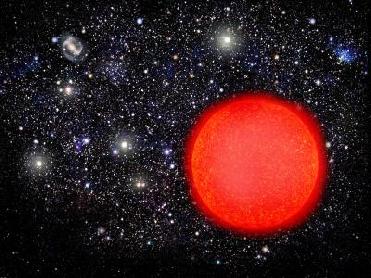
London (PTI): An unexpectedly small fraction of the gamma ray light that pervades the universe comes from gluttonous black holes - but the source of the rest is unknown though dark matter could be a contributor, says a new study.
The gamma ray sky is dominated by the glow of Milky Way and other known galaxies and individual neutron stars.
And planetary scientists have long assumed that most of this gamma ray fog gets its start in galaxies whose super massive black holes are spewing jets of charged particles into space as they feed on surrounding matter.
Now, a new analysis of data collected by NASA's Fermi telescope has suggested these so-called active galactic nuclei account for no over 30 per cent of the universe's gamma ray glow, the 'New Scientist' reported.
"Most of it -- 70 per cent of the background -- is unexplained at the moment," study leader Marco Ajello of the Kavli Institute for Particle Astrophysics and Cosmology in Stanford said.
Supernova explosions in star-forming galaxies may be another major contributor to the gamma-ray "background". Like AGN, the charged particles in these explosions could create gamma rays by slamming into gas atoms.
The collisions would produce short-lived particles called pions that decay into gamma rays. Energetic particles from the explosions can also interact with photons of infrared or optical light, boosting them to gamma-ray energies.
More diffuse sources, like colliding clusters of galaxies or annihilating pairs of dark matter particles, could also contribute to the haze.
"The better you know what you expect from conventional astrophysical sources, the more stringent limits you'll be able to set on the dark matter contribution," said Fermi collaborator Jan Conrad of Stockholm University.
Although the new study focused only on the overall brightness of the gamma-ray background, others are hoping to use maps created by Fermi to look for variations in the amount of gamma ray light emanating from different points on the sky.
This might reveal telltale clumping due to filamentary web of dark matter that is thought to act as scaffolding for the galaxies we see around us, according to the study.
 Previous Article
Previous Article Next Article
Next Article













The Indian Air Force, in its flight trials evaluation report submitted before the Defence Ministry l..
view articleAn insight into the Medium Multi-Role Combat Aircraft competition...
view articleSky enthusiasts can now spot the International Space Station (ISS) commanded by Indian-American astr..
view article